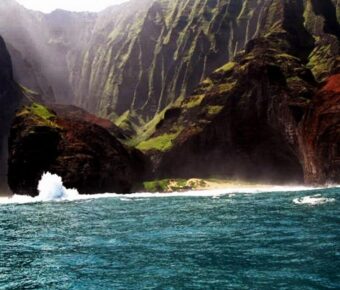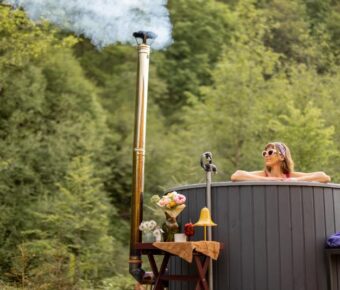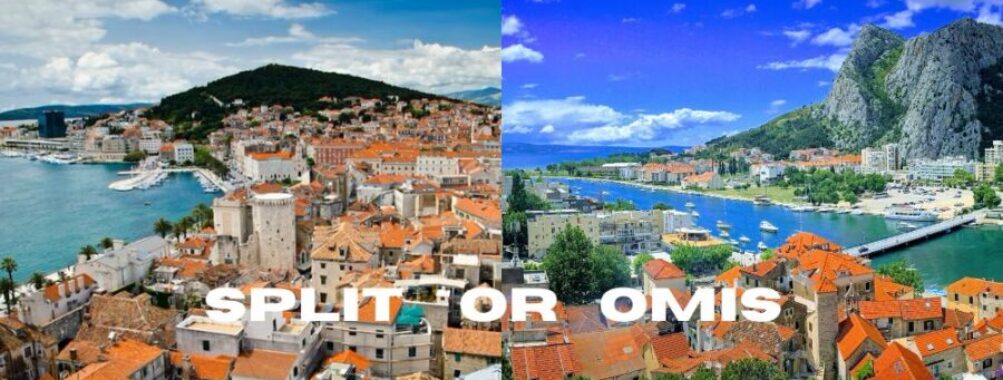
Split vs Omis: Which Croatian Coastal Town Offers the Best Adriatic Experience in 2025
Nestled along Croatia‘s stunning Dalmatian Coast, Split and Omis offer travelers two distinct experiences. Split stands as a vibrant, bustling city with ancient Roman architecture and modern amenities. Omis, a smaller coastal gem, charms visitors with its quiet streets and dramatic location between mountains and sea.
Split provides more attractions and nightlife options as Croatia‘s second-largest city, but Omis excels as a peaceful base for outdoor adventures like river rafting, hiking, and zip-lining in the nearby Cetina River canyon. Both destinations give easy access to popular islands like Hvar and Brac.
Many travelers choose to stay in one location and visit the other as a day trip. The two cities sit just 25 kilometers apart, making it simple to experience both during a Croatian vacation. Split’s size and energy contrast perfectly with Omis’s laid-back atmosphere and natural surroundings.
Table of Contents
- History and Culture
- Historical Significance of Split
- Omis: A Pirate’s Past
- Influence of Dalmatian Traditions
- Geographic Landscapes
- Split’s Stunning Coastline
- Cetina River Canyon’s Natural Beauty
- Klis Fortress and Panoramas
- Local Experiences
- Culinary Delights in Split and Omis
- Split’s Beach Life
- River Adventures in Omis
- Notable Day Trips
- Brac Island’s Famous Zlatni Rat
- The Lavender Island of Hvar
- Dubrovnik’s Old Town
- Plitvice Lakes National Park
- Accommodation and Transportation
- Park and Stay in Split
- Charming Stays in Omis
- Finding Peace in Zaton and Baska Voda
- Frequently Asked Questions
- What unique attractions does Omiš offer compared to other Croatian coastal towns?
- How can one travel from Split to Omiš using public transport, and what are the logistics involved?
- Can you recommend some off-the-beaten-path experiences in Omiš that a seasoned traveler shouldn’t miss?
- What are the top culinary experiences in Omiš for food enthusiasts?
- In terms of adventure sports, how does Omiš contrast with Split’s offerings?
- What should travelers be aware of when planning a visit to Omiš regarding local customs and regulations?
- Book Your Dream Experience
- More Travel Guides
History and Culture
The rich histories of Split and Omis tell fascinating tales of empires, pirates, and ancient civilizations along the Dalmatian coast, with each city carving out its own unique cultural identity over thousands of years.
Historical Significance of Split
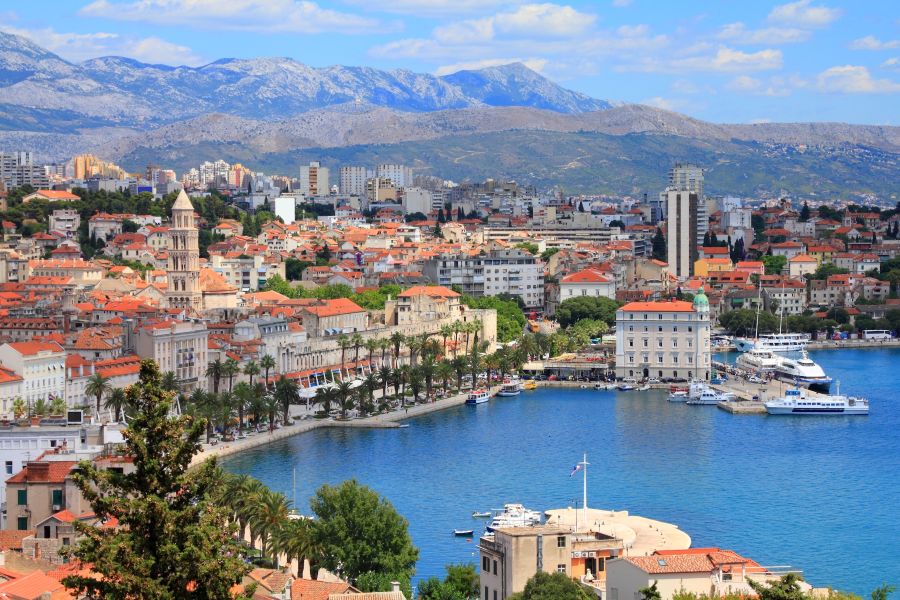
Roman Emperor Diocletian’s retirement palace in the 4th century AD grew into Split. The massive palace complex still forms the heart of Split’s Old Town today. The city expanded as refugees from nearby Salona, the former Roman capital of Dalmatia, sought safety within its walls during the 7th century.
Roman architecture blends with Venetian, Gothic, and Renaissance influences throughout Split’s streets. The city’s strategic location made it a prized possession for various rulers across the centuries.
Stone buildings and narrow alleyways in Split’s historic center reflect daily life from centuries past. Local markets and gathering spots continue age-old traditions.
Omis: A Pirate’s Past
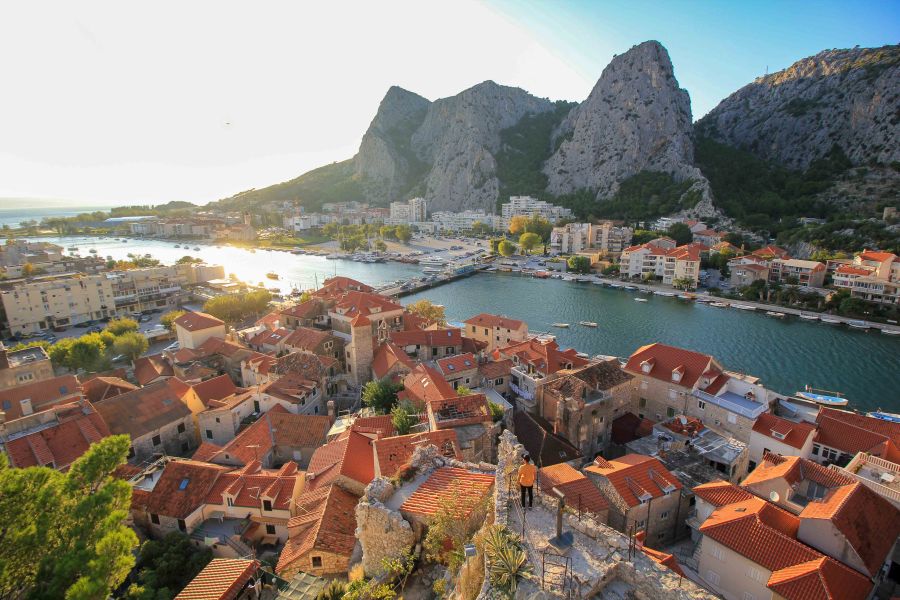
Omis earned fame as a pirate stronghold in the 12th and 13th centuries. The town’s pirates, known as the Omis corsairs, controlled the Adriatic Sea between Split and Dubrovnik. They built impressive fortresses high in the cliffs to protect their territory.
The town went by several names through history: Oneum, Almissa, and Olmissium. Each name marked a different chapter in its story.
Two medieval fortresses – Mirabella and Starigrad – still watch over Omis today. The fortresses offered perfect lookout points to spot approaching merchant ships.
Influence of Dalmatian Traditions
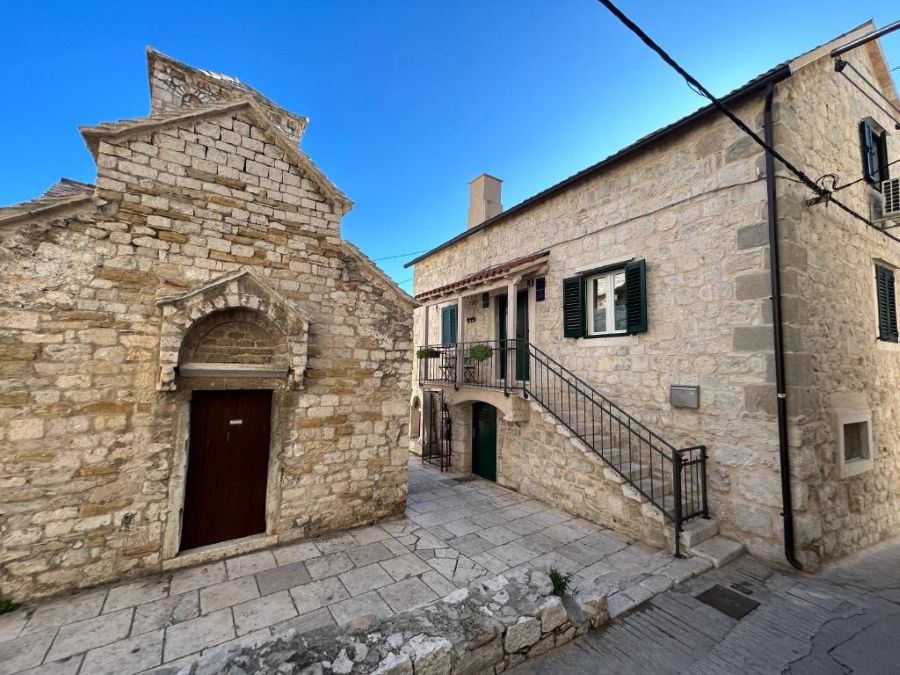
Stone houses, outdoor markets, and fishing boats reflect the shared heritage of both cities. Local dishes like grilled fish, prosciutto, and olive oil connect modern visitors to ancient Mediterranean customs.
Religious festivals and cultural events keep old traditions alive. Churches and monasteries serve as centers of community life, just as they did centuries ago.
Music plays a special role in local culture. Klapa groups perform traditional Dalmatian songs in town squares and special events throughout the year.
Geographic Landscapes
Split and Omis showcase some of Croatia’s most dramatic natural scenery, from rugged coastal cliffs to deep river canyons and ancient fortresses perched high above the Adriatic Sea. The landscapes of these two destinations offer distinct experiences for nature lovers and adventure seekers.
Split’s Stunning Coastline

Split’s coastline features a mix of pebbly beaches and rocky coves set against the backdrop of Marjan Hill. This green peninsula rises 178 meters above the city, creating a natural park with walking trails and viewpoints.
The city’s harbor area combines natural beauty with human history. Ancient Roman architecture blends seamlessly with the coastal terrain, while palm-lined promenades stretch along the water’s edge.
Pine forests cover much of the higher ground around Split, providing shade and hiking opportunities with sea views. The clearest days offer glimpses of nearby islands like Brač and Šolta floating on the horizon.
Cetina River Canyon’s Natural Beauty

The Cetina River shapes Omis’s most striking natural feature – a deep limestone canyon carved over thousands of years. Steep cliffs rise up to 300 meters on both sides of the crystal-clear water.
Dense forests cover the canyon walls, creating a lush green corridor through the karst landscape. The river winds past hidden caves and waterfalls before meeting the Adriatic Sea right at Omis’s center.
The canyon creates perfect conditions for activities like rafting and rock climbing. Its sheltered waters range from calm pools to exciting rapids, while limestone walls attract climbers from across Europe.
Klis Fortress and Panoramas
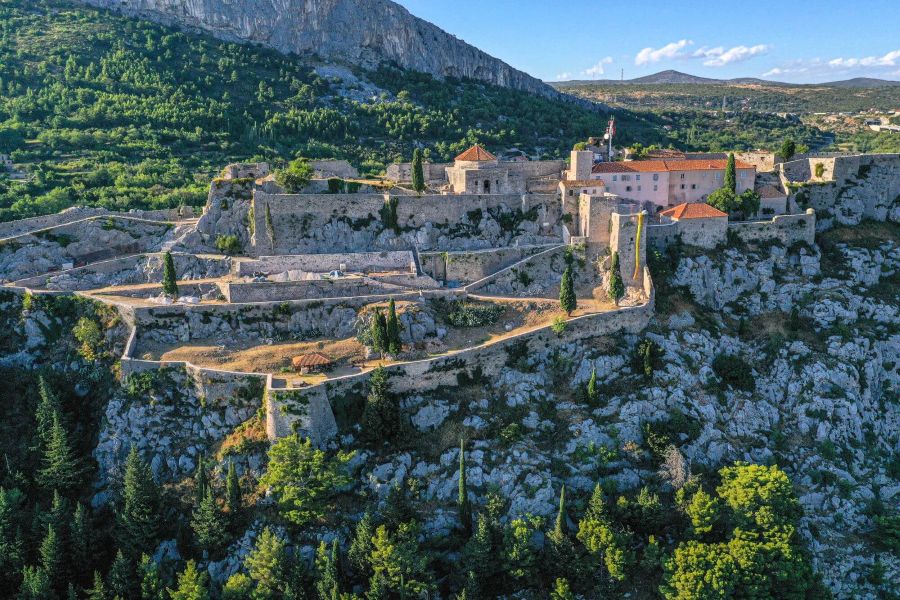
Klis Fortress sits atop a rocky ridge between Split and Omis, offering 360-degree views of both destinations. From this ancient stronghold, visitors can see the entire Split coastline, distant islands, and inland mountains.
The fortress’s strategic position showcases the region’s varied terrain. To one side lies the coastal plain and Split’s urban spread, while the other reveals rugged mountains and the deep cut of the Cetina Canyon.
Morning visits provide the best photo opportunities as sunlight illuminates both the sea and mountains. Spring brings wildflowers to the fortress grounds, adding color to the rocky landscape.
Local Experiences
Both Split and Omis offer unique ways to experience authentic Dalmatian life, from fresh seafood to outdoor adventures. Each town brings its own special flavor to coastal living.
Culinary Delights in Split and Omis

Split’s food scene centers around fresh seafood and Mediterranean ingredients. The local green markets burst with seasonal produce, while family-run konobas serve traditional Dalmatian dishes like pašticada and black risotto.
Omis takes pride in its river-influenced cuisine. Kastil Slanica offers memorable dining right on the Cetina River, serving local trout and eels in a historic setting.
The traditional restaurant Radmanove Mlinice sits in a restored mill building beside the river. Guests can try homemade bread, grilled meats, and fresh-caught fish while enjoying views of the water.
Split’s Beach Life

Bačvice Beach stands out as Split’s most famous sandy spot. This shallow bay attracts locals for picigin, a unique ball game played in ankle-deep water.
Visitors can find quieter spots at Kašjuni Beach beneath Marjan Hill. The clear waters make it perfect for swimming and snorkeling.
Many beaches offer water sports rentals and guided boat tours to nearby islands.
River Adventures in Omis
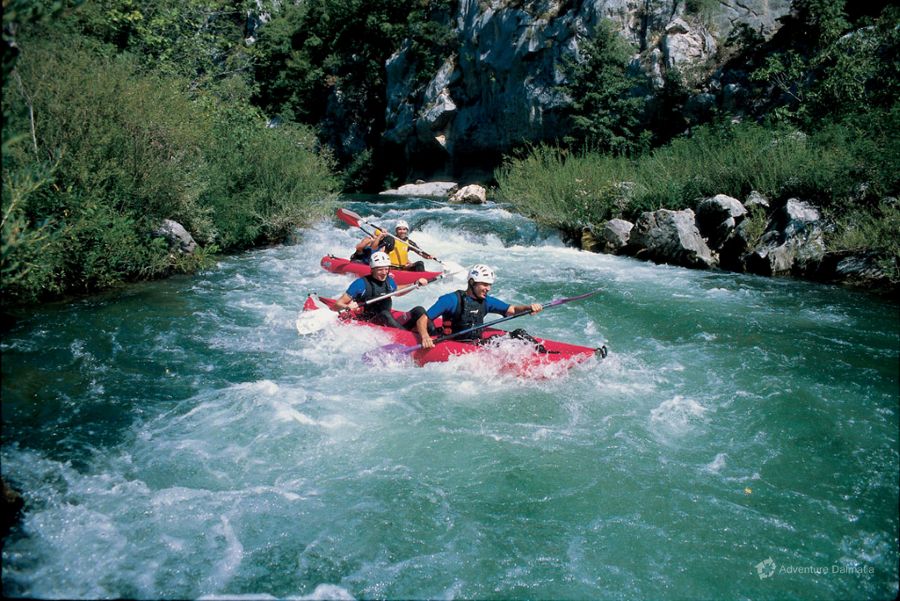
The Cetina River creates an adventure playground in Omis. Visitors can try rafting through the canyon’s rapids or zip lining across the gorge.
Kayaking tours let people explore the river’s calm sections and hidden caves. The crystal-clear water provides excellent visibility for spotting fish.
Gentle boat rides take guests upriver to see old water mills and limestone cliffs. Many tours stop at riverside restaurants for traditional meals.
The river meets the sea right in town, creating a unique mix of activities. Visitors can go from river swimming to beach sunbathing in minutes.
Notable Day Trips
Split and Omis serve as perfect bases to explore Croatia’s most stunning destinations, from pristine beaches to historic fortresses and natural wonders. These destinations offer unforgettable experiences within easy reach.
Brac Island’s Famous Zlatni Rat
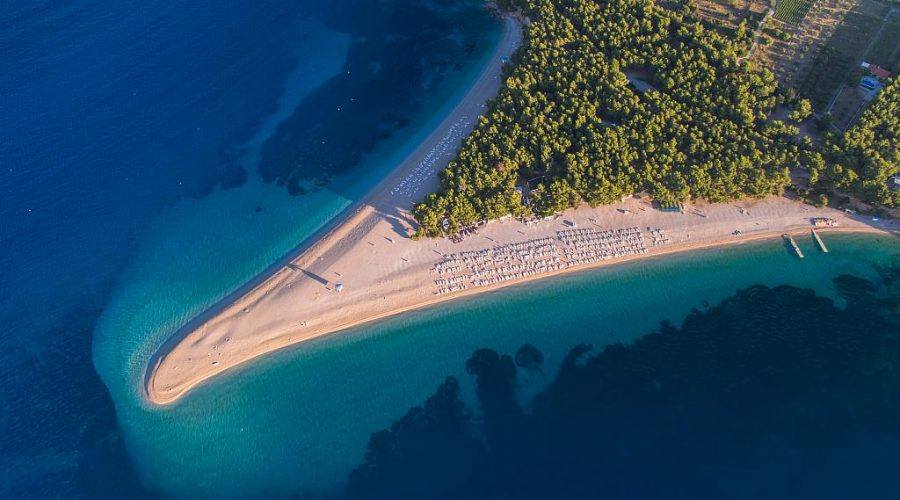
The iconic Zlatni Rat Beach on Brac Island stands out with its unique V-shaped peninsula that shifts with the winds and currents. The beach extends about 500 meters into the crystal-clear Adriatic Sea.
Visitors can reach Brac by ferry from Split in just 50 minutes. The journey to Zlatni Rat beach takes another 15 minutes by bus from Supetar port.
The beach offers perfect conditions for windsurfing and kiteboarding due to reliable afternoon winds. Peak season brings crowds, so early morning visits work best.
Beyond the beach, Brac’s charming villages like Bol feature traditional stone houses and local restaurants serving fresh seafood and regional specialties.
The Lavender Island of Hvar
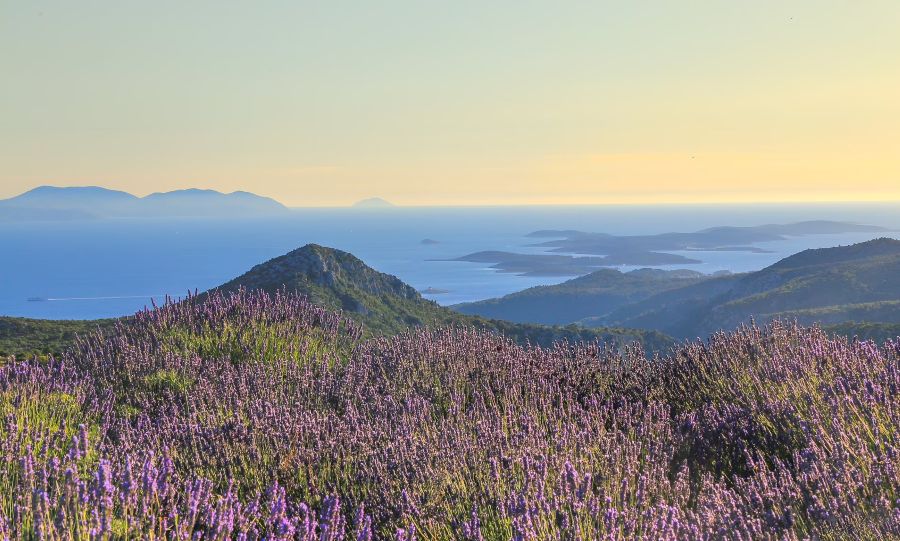
Hvar blends medieval architecture with lavender fields and crystal-clear bays. The island’s main town showcases a stunning 13th-century arsenal and the largest square in Dalmatia.
Getting to Hvar takes 1 hour by catamaran from Split. The best time to visit is June when lavender fields bloom in purple hues.
The island’s south coast hides secluded beaches like Dubovica and Sveta Nedjelja. These spots offer peaceful alternatives to the buzzing Hvar Town beaches.
Local wine tours explore family-owned vineyards producing Plavac Mali, the region’s signature red wine.
Dubrovnik’s Old Town
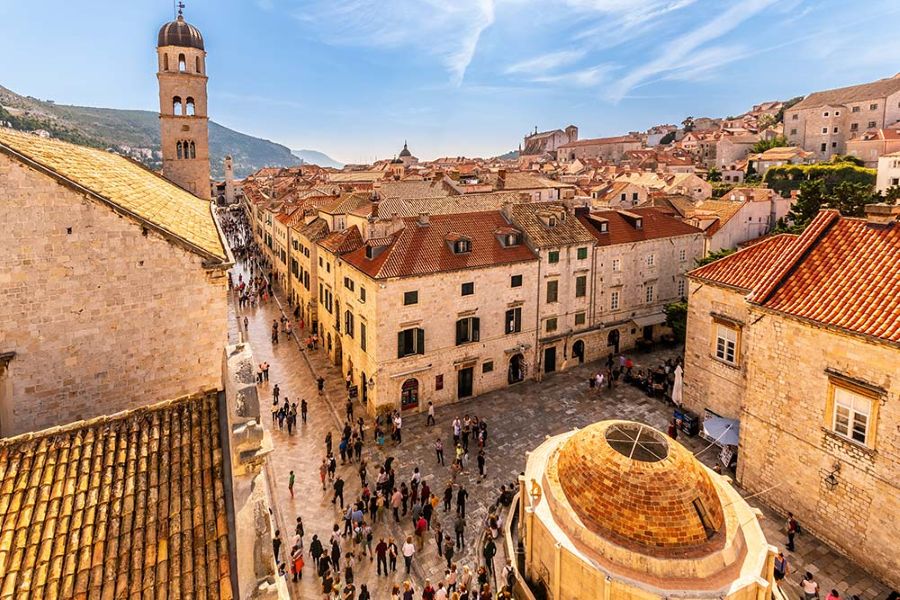
The Pearl of the Adriatic captivates with its limestone streets and massive city walls. UNESCO-protected Dubrovnik Old Town transports visitors back in time.
Walking the city walls provides spectacular views of terracotta roofs and the sparkling Adriatic. The complete circuit takes about 2 hours.
The cable car ride to Mount Srđ offers panoramic views of the old town and nearby islands. Sunset trips prove most memorable.
While the journey from Split takes 4 hours by bus, the coastal route showcases stunning scenery.
Plitvice Lakes National Park
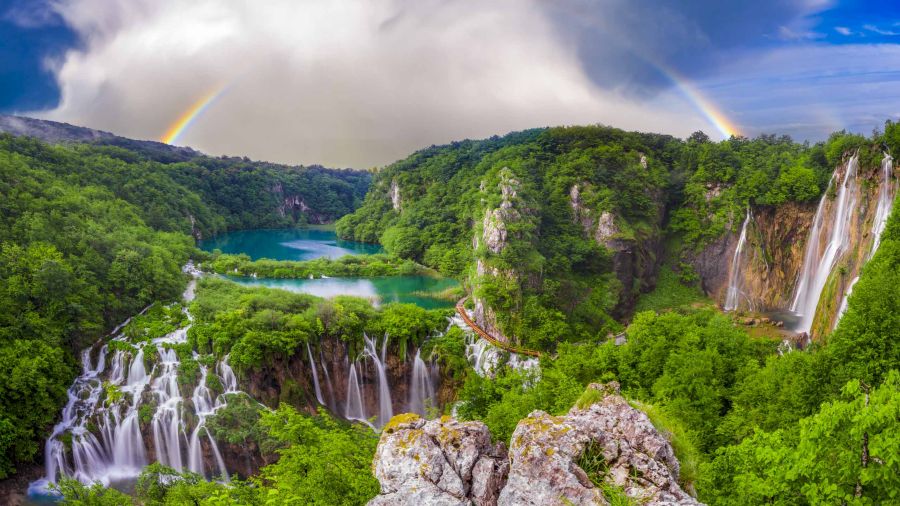
This natural wonder features 16 interconnected lakes in shades of turquoise and emerald. Wooden walkways wind through the park, crossing waterfalls and limestone formations.
The park sits 3.5 hours from Split by car. Guided tours help maximize time and hit the key highlights.
Spring and fall bring fewer crowds and comfortable temperatures. The lakes show different colors each season.
The Upper Lakes section displays the park’s largest waterfall, Veliki Slap, dropping 78 meters.
Accommodation and Transportation
Finding the right place to stay and getting around easily makes all the difference when visiting these amazing Croatian coastal towns. Each location offers unique lodging options with different vibes and price points.
Park and Stay in Split
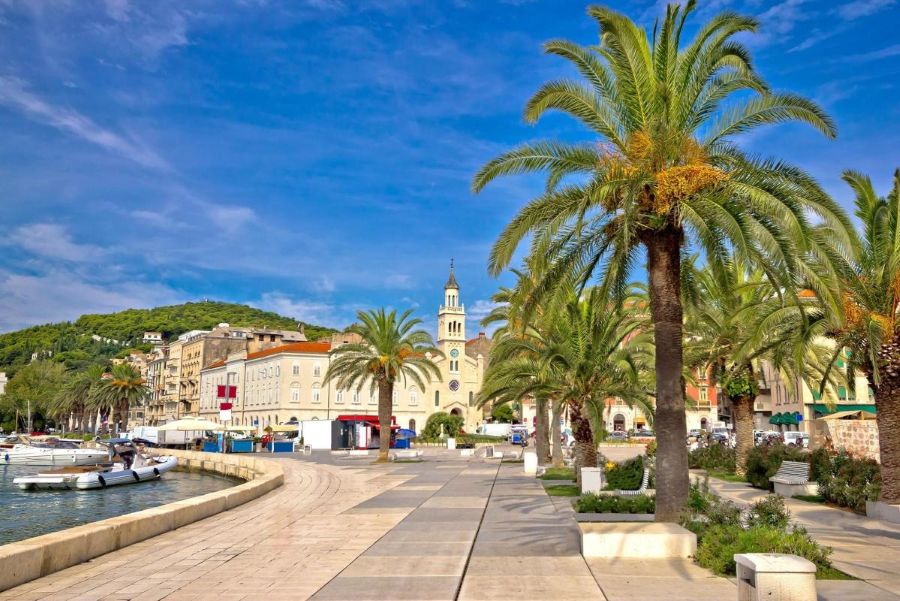
Split has lots of apartments and hotels near Diocletian’s Palace. Most accommodations in the Old Town don’t include parking, which can be tricky. The public garage by the ferry port charges 15-20 euros per day.
The most convenient spots to stay are along the Riva waterfront promenade. These luxury waterfront hotels offer amazing views but cost more than places a few blocks inland.
Budget travelers can find great deals on simple rooms and hostels in the Varoš neighborhood west of the palace. This area has more local character and cheaper rates.
Charming Stays in Omis
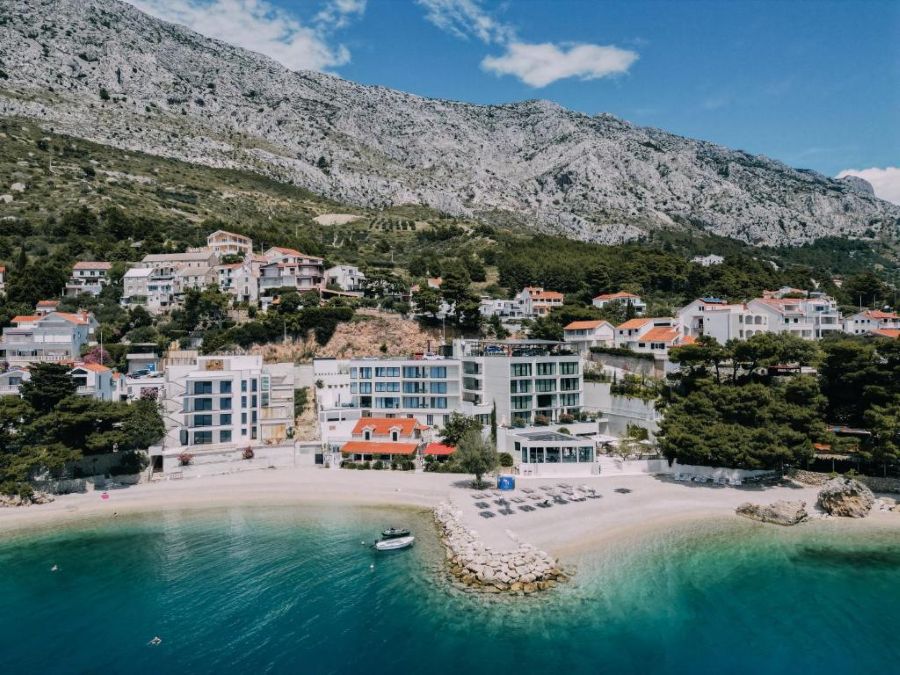
Omis shines with its family-run guesthouses and small boutique hotels. Many spots sit right along the Cetina River with views of the dramatic cliffs.
The old town area has renovated stone buildings turned into cozy apartments. Prices run 30-50% less than similar places in Split.
Most Omis properties include free parking, which makes a huge difference. The beach areas south of town have newer apartment complexes perfect for families.
Finding Peace in Zaton and Baska Voda
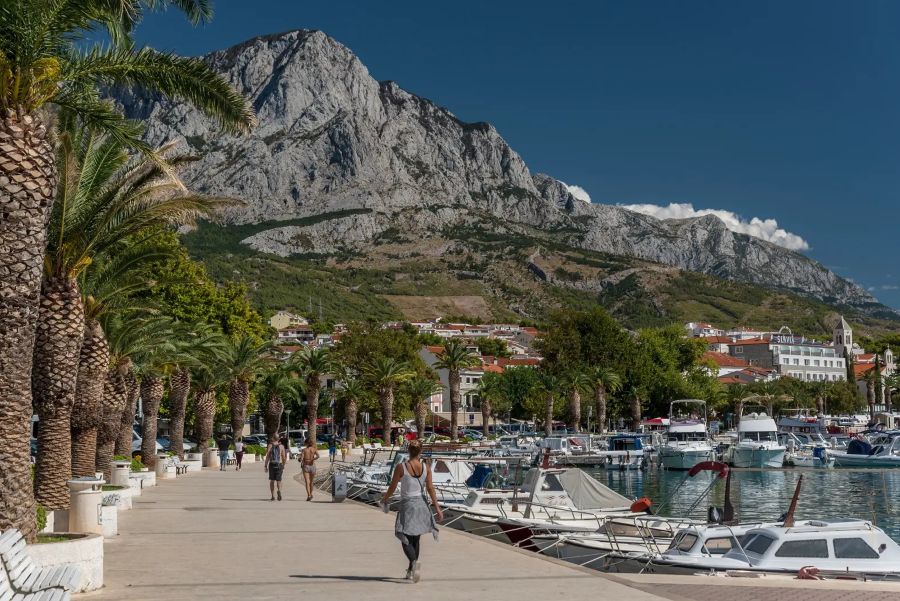
These peaceful villages offer a totally different experience from busy Split. Think small Mediterranean hotels and private rooms in local homes.
Zaton’s waterfront properties give easy beach access without crowds. The whole village feels more authentic and laid-back.
Baska Voda specializes in apartment rentals with kitchens and balconies. Transportation options between villages are limited, so having a car helps explore the area.
The best deals come from booking directly with local hosts. Many include extras like bike rentals or boat trips.
Frequently Asked Questions
Omiš combines adventure sports, cultural attractions, and culinary experiences that make it distinct from other Croatian coastal destinations. The town’s unique position between mountains and sea creates opportunities for activities ranging from ziplining to river rafting.
What unique attractions does Omiš offer compared to other Croatian coastal towns?
Omiš sits at the mouth of the Cetina River, creating a dramatic landscape where mountains meet the sea. The town’s 13th-century Mirabella Fortress watches over narrow stone streets and medieval churches.
The Cetina River Canyon offers a natural playground for outdoor enthusiasts. Ancient pirate history adds an extra layer of intrigue to the town’s story.
How can one travel from Split to Omiš using public transport, and what are the logistics involved?
Regular buses run between Split and Omiš, and tickets start at around $8. The journey takes about 30 minutes.
Buses depart from Split’s main bus station throughout the day. FlixBus offers clean, comfortable service with easy online booking options.
Can you recommend some off-the-beaten-path experiences in Omiš that a seasoned traveler shouldn’t miss?
The Via Ferrata climbing route offers stunning views of the Adriatic Sea. This protected climbing path suits both beginners and experienced climbers.
Hidden beaches along the Cetina River provide peaceful spots away from tourist crowds. Local fishing trips with resident fishermen give authentic insights into coastal life.
What are the top culinary experiences in Omiš for food enthusiasts?
Fresh seafood restaurants line the waterfront, serving local specialties like grilled fish and black risotto. Small family-run konobas offer traditional Dalmatian dishes made from centuries-old recipes.
Local markets sell regional products like olive oil, dried figs, and local wines. Many restaurants feature outdoor terraces with views of the river and sea.
In terms of adventure sports, how does Omiš contrast with Split’s offerings?
Omiš specializes in river-based activities like rafting, kayaking, and canyoning on the Cetina River. The town also features Croatia’s longest zipline across the canyon.
Rock climbing routes suit various skill levels. Split focuses more on urban and beach activities, making Omiš the superior choice for adventure sports.
What should travelers be aware of when planning a visit to Omiš regarding local customs and regulations?
Many businesses close for afternoon rest, so respect quiet hours between 2 PM and 5 PM. Swimming areas have designated zones for safety.
By law, adventure activities require certified guides. Book through licensed operators who provide proper safety equipment and insurance.

